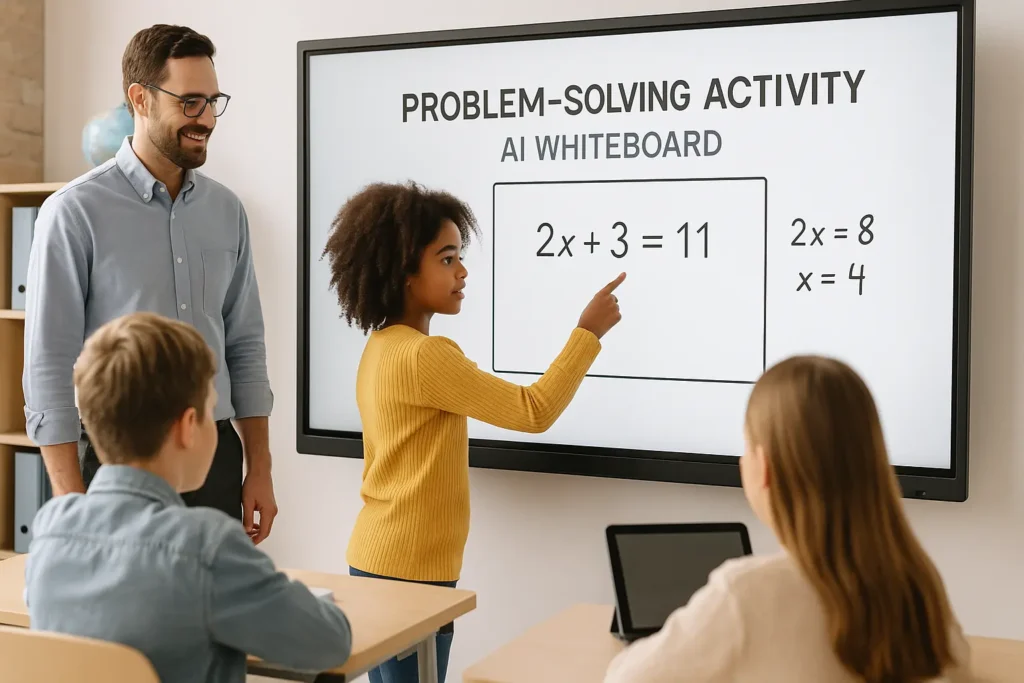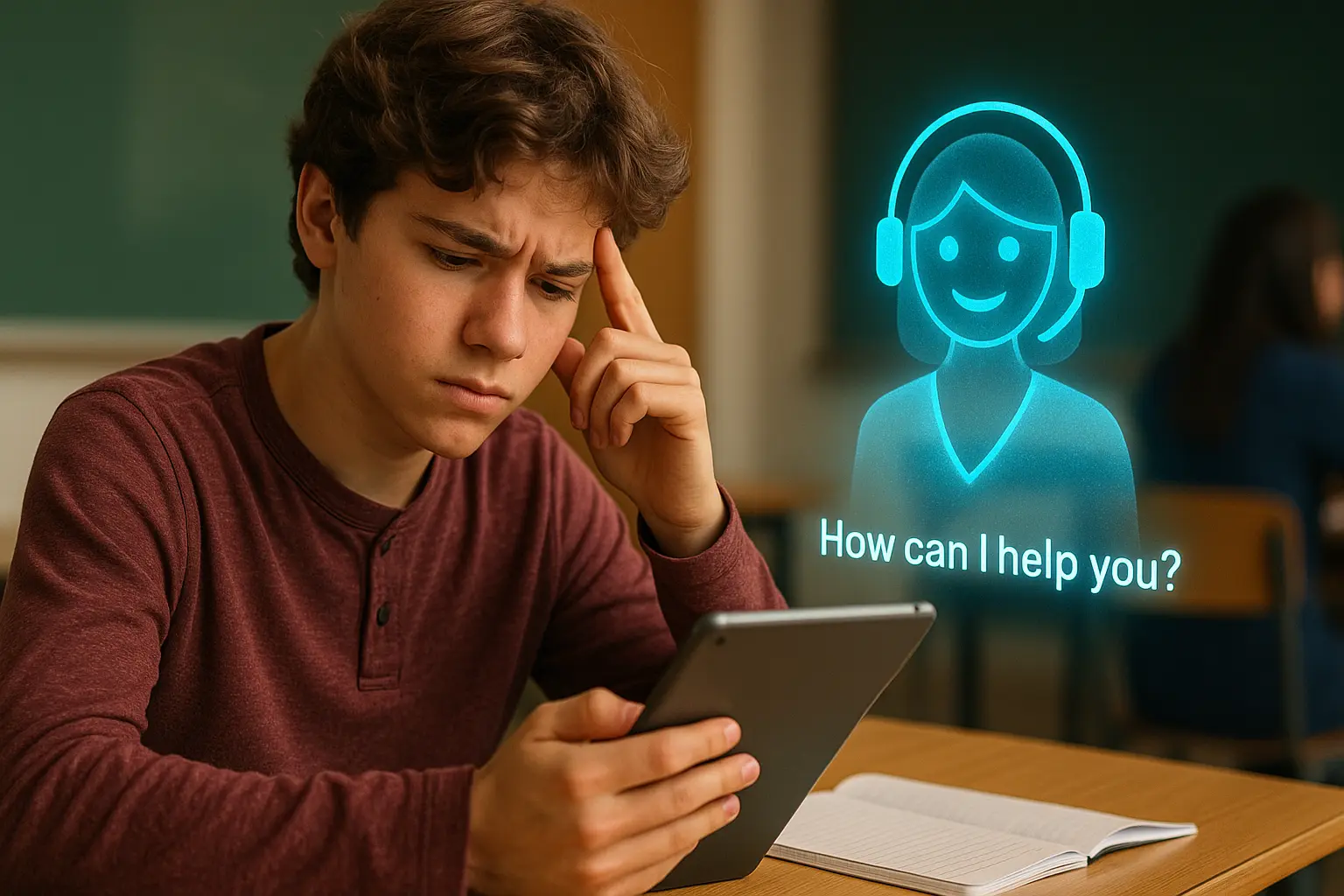In recent years, Artificial Intelligence (AI) has entered classrooms around the world. Some people are excited, while others feel unsure. Many teachers ask: Can AI in education improve critical thinking? Let’s talk about this question in a simple way, using real examples and clear language.
What Does Critical Thinking Mean in the Classroom?
Before we answer the question “Can AI in education improve critical thinking?”, let’s understand what critical thinking really means. Critical thinking is when students don’t just accept information, but ask questions, think deeply, and make their own decisions. It’s about:
- Asking “why?” and “how?”
- Looking at problems from different angles
- Using facts and logic to make choices
- Not believing everything at face value
In today’s world, full of fake news and fast information, critical thinking is more important than ever.
How Can AI Improve Critical Thinking?
AI tools can be powerful helpers in developing critical thinking, especially when used with good guidance from teachers. But how?
1. Personalized Learning Encourages Deep Thinking
AI platforms like Khan Academy and Socratic by Google give students personalized learning paths. These tools adjust to each student’s pace and level. Instead of just memorizing answers, students are guided to understand why something is correct or not.
When students work at their own pace, they have more time to reflect, test ideas, and develop deeper understanding.
2. AI as a Feedback Assistant
Writing tools like Grammarly or AI chatbots can help students write essays and answer questions. These tools highlight errors and give suggestions—not just corrections. Students are encouraged to rethink and revise their texts, which is a big part of critical thinking.
Instead of saying, “This is wrong,” AI might say, “Consider rephrasing this for clarity.” This makes students reflect instead of just fixing.
3. Real-Life Problem Solving with AI
Apps and platforms that use AI can present real-world problems. For example:
- Math AI tutors that adjust difficulty based on responses.
- Science platforms that use simulations.
- AI-based debates that help students explore both sides of a topic.
These tools push students to analyze, compare, and choose—key parts of critical thinking.
4. AI Promotes Questioning and Curiosity
AI chatbots and virtual assistants can act like curious partners. When students ask questions, AI can reply with follow-up questions. This encourages deeper conversations.
For example:
Student: Why is the sky blue?
AI: That’s a great question! Do you know how sunlight interacts with the atmosphere?
These back-and-forth interactions promote curiosity and analysis.
5. Language and Multicultural Learning
AI translation tools help students access content in different languages and from different cultures. When learners explore ideas across cultures, they begin to question their own views and assumptions. This builds empathy and deeper thinking.
The Role of Teachers: AI Doesn’t Replace, It Supports
Even though AI is powerful, it doesn’t replace good teaching. Teachers are essential to:
- Guide students in using AI wisely
- Encourage discussions and reflections
- Ask open-ended questions
- Build safe spaces for curiosity
AI can offer tools, but teachers bring heart, context, and real-world meaning.

Are There Any Challenges or Risks?
Yes, and we must talk about them.
1. Over-Reliance on AI
If students only follow AI suggestions without thinking for themselves, they might stop questioning. That’s the opposite of critical thinking.
2. Biased AI Models
AI systems are trained on data. If the data is biased, the AI can pass those biases to students. Teachers need to teach students to question AI just like they would question a textbook.
3. Inequality in Access
Not all students have the same access to AI tools. Schools must work to ensure all children can benefit.
How to Use AI in a Way That Builds Critical Thinking
Teachers and schools can follow these steps:
- Choose the right tools: Use AI platforms that promote explanation, not just answers.
- Encourage discussion: Let students talk about what AI suggests. Is it right? Why or why not?
- Create projects: Use AI to support research, writing, or multimedia tasks.
- Teach digital literacy: Help students learn to question AI outputs.
Practical Classroom Examples
Here are some simple ideas for using AI to support critical thinking:
- AI Chat Debates: Ask students to debate with a chatbot about a topic. Then, reflect: What arguments were strong or weak?
- AI-Assisted Research: Let students use AI to find sources, but have them evaluate the quality.
- Writing Revisions: After writing with AI help, students must explain why they accepted or rejected changes.
These tasks can be done even with free tools and limited devices.
Key Points About Can AI Improve Critical Thinking?
- Critical thinking means asking, analyzing, and making informed choices.
- AI tools can support critical thinking with personalization, feedback, and interaction.
- Teachers remain essential to guide, challenge, and inspire students.
- AI has risks: bias, overuse, and unequal access.
- With good planning, AI can make classrooms more thoughtful and reflective.
Conclusion
So, can AI in education improve critical thinking? The answer is: Yes—but only when used the right way. AI is like a tool in the hands of a skilled teacher. It can open doors to deeper questions, better understanding, and powerful learning moments.
However, without guidance, it can also lead to shallow thinking. That’s why combining smart technology with smart teaching is the real key to growing curious, critical, and confident learners.
What do you think? Can AI help your students think more deeply? Let’s talk about it in the comments below!

